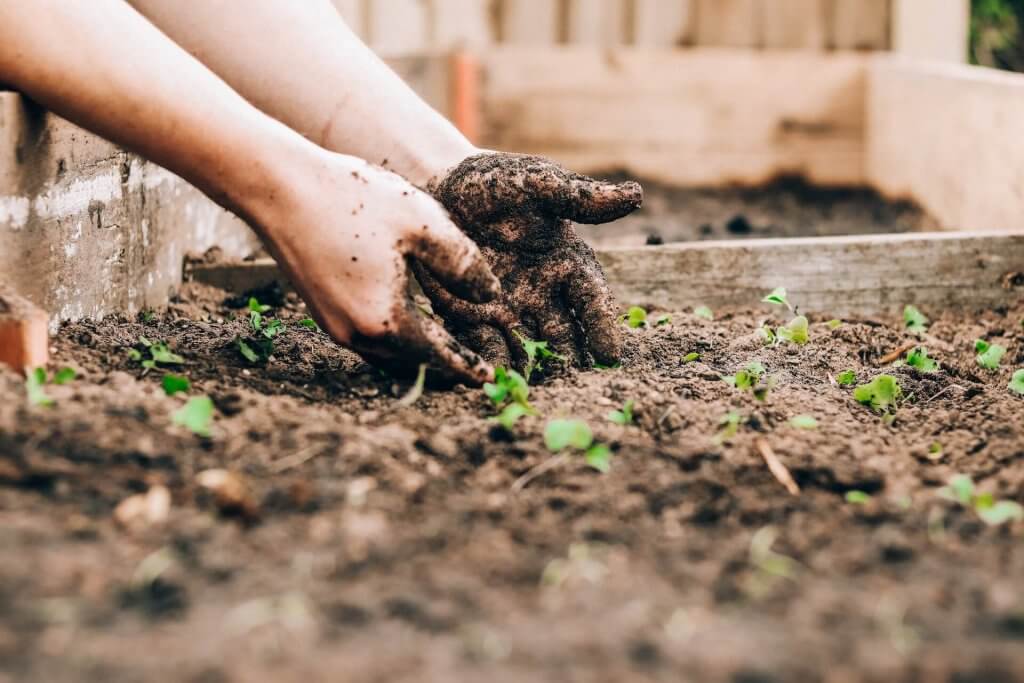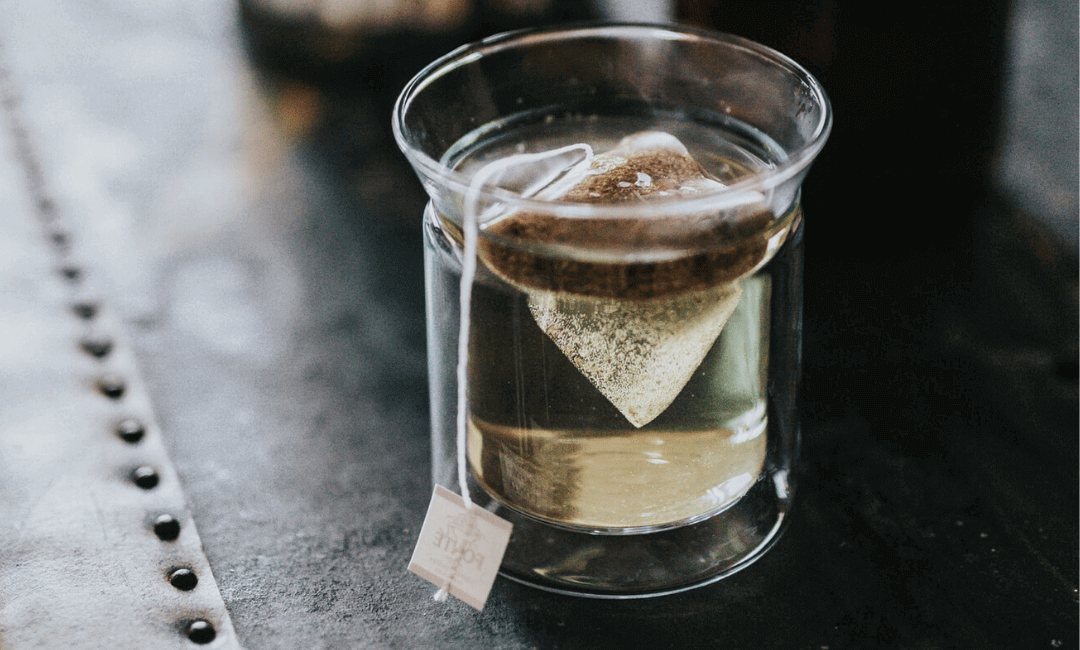How Composting Can Help to Reduce Organic Waste and Microplastic Pollution

Every year, the United States generates over 268 million pounds of waste. Much of this waste is organic, including food scraps and yard waste, and could be composted rather than thrown into a landfill.
Below, you’ll learn more about how composting works and how it can reduce organic waste and microplastic pollution. You’ll also find a list of tips to help you start your own composting journey.
What Is Composting?
Composting naturally occurs when organic matter (leaves, food scraps, grass, etc.) is recycled and turned into fertilizer that improves the health of plants and soil.
Composting speeds up the natural decomposition process that all living things go through. It creates a hospitable environment for decomposing organisms like bacteria, fungi, worms, and nematodes to do their jobs.
Farmers often refer to compost as “black gold” because of its high nutrient content and its benefits for gardening and agriculture. Some people opt out of composting because they assume it requires saving their organic waste and transporting it to a large-scale composting facility. In reality, though, they can practice composting at home and get rich soil for their own gardening projects.

Benefits of Composting
You can still benefit from composting even if you’re not into gardening. The following are some of the most significant environmental benefits composting provides, partucularly to reduce organic waste and microplastic pollution:
1) Reduced Waste
Composting can play an essential role in your zero waste-to-landfill mission. If you want to avoid sending so much trash to landfills each week when the garbage truck drives around your neighborhood, start composting. Doing so could reduce the waste you throw away by 28 percent!
Food waste strains the environment (more on that in the following sections), but it’s also expensive. The USA spend billions of dollars on waste management each year, and that could be significantly reduced by minimizing the waste you and your family produce.
2) Fewer Carbon Dioxide and Methane Emissions
When you send compostable waste to a landfill, it gets buried by other types of garbage, which cuts off its oxygen supply (oxygen is needed for the decomposition process). Decomposition without oxygen creates biogas, which consists of about 50 percent methane and 50 percent carbon dioxide (CO2). Methane and carbon dioxide are two harmful greenhouse gases that trap heat in the atmosphere and contribute to global warming. Methane is particularly destructive, as it traps heat 28-36 times more effectively than CO2.
3) Increased Water Conservation
When organic matter is introduced to soil, its water-retaining capacities increase. Just a one percent increase in organic matter can help the soil hold roughly 20,000 gallons more water per acre!
Using compost can help farmers and gardeners reduce the amount of water they use on their crops (without sacrificing their yields at the end of the season). It also reduces soil erosion by reducing runoff and improving the soil’s water-holding capabilities.
4) Reduced Water Pollution
Composting keeps raw materials (manure, wastewater treatment solids, lawn clippings, etc.) out of the water, reducing pollution (including downstream pollution caused by farm fields). It also prevents groundwater pollution. Placing a layer of compost over the soil reduces soil erosion and makes it harder for contaminants, including pesticides and herbicides, to spread. Microorganisms in the compost will break down the pollutants and stop them from entering the soil and being absorbed into the groundwater. As a result, you’re contributing to a larger water supply for everyone.
5) Improved Soil Health
Compost is wonderful for the soil, whether it’s used in large-scale agricultural systems or your private backyard garden. Compost contains three nutrients that garden crops need: nitrogen, phosphorus, and potassium. It also provides other nutrients in smaller amounts, such as calcium, magnesium, zinc, and iron.
Many people rely on synthetic fertilizers (many of which are made with harmful chemicals) to introduce these nutrients into their soil. Rather than spending money on potentially toxic products that require high amount of fossil fuel energy to produce, though, why not make your own compost and naturally nourish your soil?
Furthermore, synthetic fertilizers contain microplastics, plastic mulching as an example are the major source of microplastic pollution in agriculture and are intentionally added to maintain soil moisture, suppress weeds and prevent certain pests, particularly in China. Unfortunately, plastic-based mulch used in agriculture can degrade over time releasing microplastics and contributing to soil contamination and scientists have proven that micro- and nanoplastics have now been found in edible fruits and vegetables.
By utilizing our own compost, we therefore reduce the need for synthetic fertilizers, which often contain microplastics and other harmful chemicals that can leach into the soil, waterways and most importantly in the food we harvest. It’s important to note that you need to be very careful in what you compost, in order to avoid microplastic contamination in the soil.
6) Reduced Micro-plastic Pollution
Composting is a great way to help reduce microplastic pollution in our environment. Microplastics are tiny pieces of plastic that are harmful to nature and animals. They often come from the breakdown of larger plastic objects.
When we compost organic waste instead of throwing it in landfills, we can decrease the amount of microplastics released into the environment. Composting creates a natural environment where organic matter breaks down naturally without needing oxygen.
By composting at home instead of throwing organic matter into landfills, you help reduce the production of methane, a powerful greenhouse gas, and prevents plastic waste from turning into microplastics, which are full of toxic substances that, over time, leach into the earth and pollute the soil, poison wildlife, and run off into our groundwater and waterways.
By composting on a larger scale, we can take a proactive step to deal with microplastic pollution and protect the health of our ecosystems.
Last but not least, by purchasing products in certified home compostable packaging, we can significantly reduce our reliance on plastic packaging, especially for food products. Opting for compostable packaging alternatives means less plastic waste entering our environment. That’s a win for our soils and ultimately also a big win for our eco-system.
Related: 10 Tips for a Plastic-free Garden
How to Compost
Are you intrigued by the environmental benefits of composting but need help figuring out where to start?
Here are some simple suggestions to help you begin composting at home:
1) Know What Can and Can’t Be Composted
Several food products that typically end up in your trash can actually be composted. The following are some of the most effective options:
- Fruit and vegetable scraps
- Coffee grounds
- Paper coffee filters
- Crushed eggshells
- Plastic free paper tea bags (remove the staples first, and make sure that you tea bags are plastic free first)
Citrus fruits are the only fruit scraps that shouldn’t go into your composting bin, unless you live in a very high humid environment like the tropics. Keep strong-smelling foods like garlic and onions out as well.
Other items that can’t be composted include:
- Meat
- Dairy
- Bones
When adding food scraps to your composting bin, cut them into small pieces so they can break down faster. Always check with your local Council as to what can go in your Food Organics Garden Organics (FOGO) bin if you live in a residential area, as different rules apply to different municipalities and countries.
2) Find a Place to Store Food Scraps
Now that you know what can and can’t be composted, you need to find a place to store your compostable food scraps. Some people buy ceramic containers that sit on their countertops for easy and attractive storage. However, you can also use items like old milk cartons.
If you’re worried about the smell of decomposing food or attracting insects, you can also store food scraps in your freezer until you’re ready to transition them to an outdoor composting bin.
3) Establish a Composting Bin
Speaking of outdoor composting bins, that’s the next step. Use an old trash can, an old wooden chest, or any other large container you have on hand as your composting bin.
Alternatively, you can create a composting pile and skip the bin altogether (this isn’t recommended if you’re worried about pets or kids getting into the compost, though). If you decide to build a composting pile, make sure it doesn’t touch your fence or wall, as it will likely leave stains behind.
Related: Zero Waste Cooking: a Simple Guide to Eliminate Food Waste
4) Create Compost Mix
The composting mix consists of two primary ingredients: Greens and browns. Greens add nitrogen to your compost and support healthy microbial growth. Greens are the food scraps and coffee grounds you collect in your kitchen. The greens category also includes green waste from your yard, such as grass clippings.
Browns are carbon-rich items. Examples include pine needs, dried leaves, cardboard egg cartons, and newspapers (that’s right, you can add them to your compost pile!). Shred paper products for easier decomposition.
Layer the ingredients in the bin or pile to make your composting mix. A ratio of 3-4 parts brown to one part green is often recommended, but you can also get away with a 2:1 ratio.
Keep each layer about an inch or two high, and include extra brown items at the top to reduce odors and deter flies.
5) Spread Your Compost
The time it takes to make compost depends on the temperature. In hot weather, it can take as little as two months, but it can take 6-12 months in colder temperatures for all components to break down completely.
To facilitate the decomposition process, use a stick or spade to turn or rotate your compost pile every 7-10 days.
Pay attention to the smell to determine if your compost is ready to use.
If it smells like trash, it’s not ready. This smell might also indicate that it’s too wet and that you need to incorporate more brown ingredients.
Usable compost will smell earthy and have a fluffy texture.
Start Composting at Home Today
Composting is an incredible way to reduce food waste, minimize the amount of trash sent to landfills, and prevent air and water pollution. Composting helps reduce microplastic pollution. It also provides you with valuable black gold that you can use to fertilize your garden and grow healthier produce and plants.
Follow the suggestions discussed above to start composting and enjoying all the benefits it provides.
—
Browse more articles related to plastic free living.
Browse our platform to find more sustainable home & living brands.


